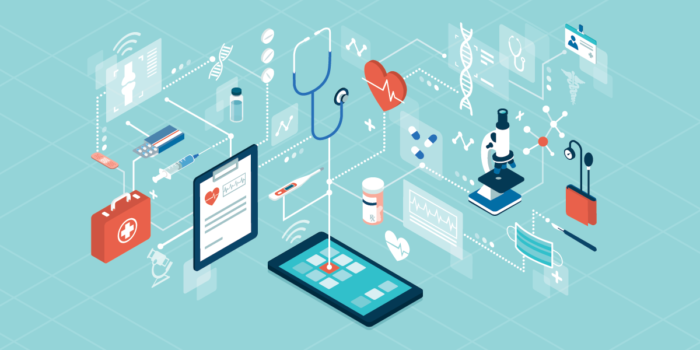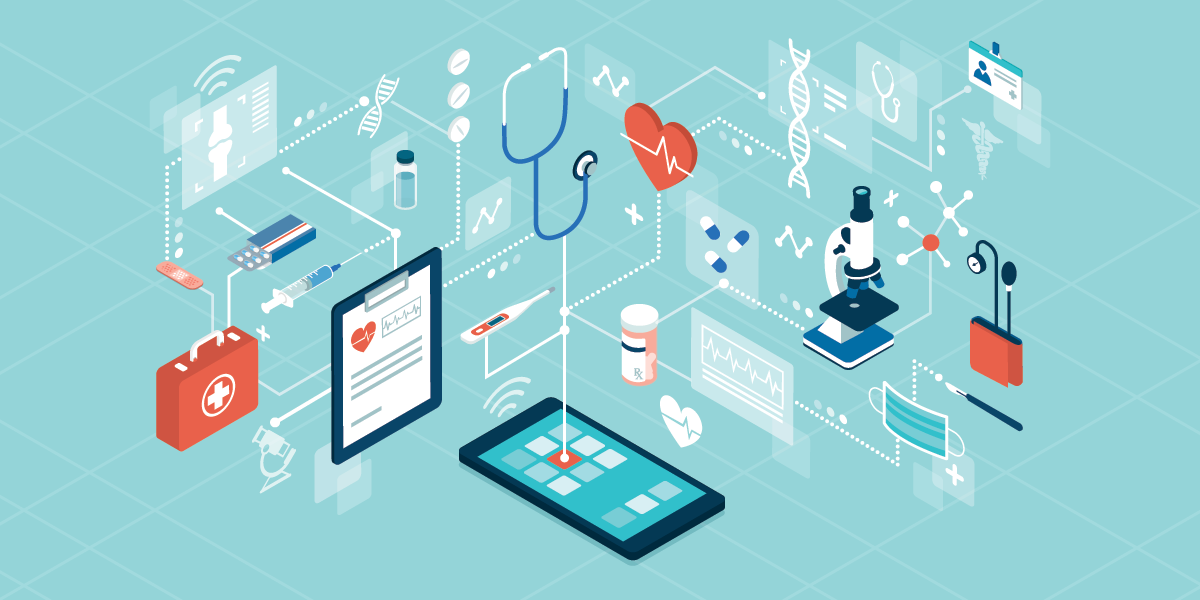The right focus, the right results PMOs must be business focused; you have probably heard that,…

3 Key Risks for IoMT Product Development

What used to seem impossible is now possible for healthcare providers.
Driven by accelerating technology, the Internet of Medical Things (IoMT) creates an ever-growing network of medical devices and applications that transform patient care and significantly decrease the burden on healthcare systems. The IoMT includes smart devices that provide real-time data, location, and medical monitoring.
But as with any innovation, IoMT product development and innovation brings risks that need to be considered.
In this article, we’ll discuss the growing and rapidly evolving IoMT market and how manufacturers can effectively manage three critical risks when prioritizing IoMT innovations.
What Are Some of the Most Common IoMT Products?
IoMT devices such as wearables, monitoring sensors, and implantable and ingestible devices open up a world of possibilities for improving bidirectional feedback along the care continuum. Some of the most common IoMT products are consumer-targeted fitness trackers and other wearables that aren’t installed by a healthcare professional.
Specialized, medical-grade devices are expanding as technology advances, and new applications are found. The common thread is that these devices work to create a two-way flow of information between providers and patients — empowering both parties and bridging gaps in care.
What Caused the IoMT Market to Grow So Quickly?
Over the past few years, the global IoMT has had an annual growth rate of 26.2%. That number is expected to skyrocket as the market increases from $30.79 billion in 2021 to $187.60 billion in 2028.
The IoMT’s rapid market growth is due to two major factors: advancing technology in connected devices and a growing need to reduce healthcare costs.
Digitally enhanced experiences and advancements in high-speed networking technologies are hitting the medical industry at the right time. Healthcare consumers are asking for greater affordability and transparency into the cost of care. While at the same time, both patients and providers are advocating for improvements in care coordination across various settings, whether in-home or at the clinic.
In addition, the increase of chronic conditions and diseases in all demographics has added even more pressure. The number of Americans aged 65 and older is expected to double over the next few decades, creating a massive group of potential IoMT users.
The COVID-19 pandemic also acted as a major catalyst for IoMT growth. Connected medical devices had been increasing for years, but the pandemic accelerated the adoption of digital healthcare solutions for both patients and providers. For example, telehealth usage took off in the Spring of 2020. While usage has stabilized over time, rates are still well-above pre-pandemic levels.
The growth of telehealth adoption also succeeded in fueling other digital healthcare innovations. Overall, the global IoMT market saw positive growth of 71.3% in 2020 compared to the average year-over-year growth in 2017-2019.
3 Challenges of IoMT Product Development
As with any growing technology, there are risks IoMT stakeholders and product developers need to consider to ensure their products offer strong ROI. But more importantly, they need to prioritize patient safety, regulatory compliance, and speed-to-market.
1. Cybersecurity
No technology conversation is complete without discussing cybersecurity. It’s especially pertinent in healthcare, as the field is a top target for cybercriminals because of high-value medical records.
Every connected device opens the door to a potential cyber-attack. More than half of all connected medical devices contain critical vulnerabilities that could harm a patient’s safety and privacy. And with so many devices connected to the same network, one open door can put millions of other devices and users at risk.
Cybersecurity protection must be one of the most critical features of a connected device. To combat cybersecurity threats, security must be top of mind throughout the development, design, and production phases. IoMT developers need to consider the technical side of cybersecurity protection and how to communicate and support customers to keep their devices updated and secure.
2. Compliance
Healthcare is highly regulated. Regulations often spur innovations; however, innovations can also prompt new public safeguards. Organizations developing IoMT products need to pay close attention to these regulations, so their requirements are reflected when planning and prioritizing. This is especially true for IoMT product development across multiple countries, as rules can vary between regions.
One area of important consideration and constant attention is interoperability. Although the FDA has yet to require medical device interoperability standards, it has encouraged developers to include the ability to safely and securely exchange information between devices, saying that it is critical to patient care and reducing errors. It is likely that interoperability will play a key role in IoMT product development with significant financial implications.
Regular compliance testing throughout IoMT planning, development, and post-launch can help to mitigate or avoid compliance issues. Testing should be done at regular intervals, and be a highly visual element of the product portfolio management process. Concurrent testing allows developers to ensure compliance and can also surface potential risks to stakeholders.
Testing for compliance is essential for delivering innovative IoMT products with speed and confidence but also for extending the lifecycle of those products for maximum ROI.
3. Supply Chain
Most industries have been impacted by supply chain challenges post-pandemic, and IoMT development is no exception. The recent microchip supply chain shortage impacted all IoT products. Although medical devices currently account for 1% of the global chip supply, demand is expected to double before 2028 — and supply chain issues aren’t going anywhere.
Many manufacturers and governments have pushed to prioritize the supply chain for semiconductor chips used medical industry, but this isn’t guaranteed. IoMT product developers need to be able to create scenarios that can help them understand the impact of potential supply chain challenges. With that foresight, they can create contingency plans that will help them mitigate the effects of any shortages.
Reduce Risk Through Product Portfolio Management
Risks are inherent in IoMT product development but having a clear view of your product portfolio, and all its dependencies can help companies mitigate their impact.
One example comes from one of the world’s leading medical technology companies.
Although the company had experienced incredible success, its product complexity, intense competition, and heavy medical device regulations diluted its focus on strategic initiatives. Teams lacked clarity in resource capacity, and expected ROIs were unclear. These issues compounded to make knowing what products to move on and which to kill difficult. Eventually, major delays in strategic product introduction led to a significant revenue loss.
After partnering with TechRuum, the organization was able to streamline the capture of new product ideas and innovations. With that added capability, the multinational medical technology company could then easily rank and prioritize products based on integrated financial and capacity planning data, adding both speed and confidence to product development and delivery.
Since rolling out the new software, the organization has been able to strategically expand its product portfolio. The time required to approve projects has dropped from a month to one to two weeks — the first step in reducing the time to market for new products.
Minimize IoMT Risks and Ensure ROI with Better Product Portfolio Management
One of the best ways to minimize IoMT development risks while growing ROI is improved clarity in product portfolio management. Simple access to highly visual, real-time product and market intelligence in a consolidated platform helps companies ensure they are investing in the right products that align with their strategic goals and maximize return.
An acceleration toward digital healthcare combined with the move to value-based care has pushed the demand for medical devices that leverage features found in many day-to-day products. IoMT also has the power to revolutionize healthcare by bridging gaps in the care continuum, making it more accessible, and cutting costs.
However, IoMT product development faces three major risks:
- Cybersecurity
- Compliance
- Supply chain
IoMT product developers can overcome these risks with a solution that cuts through the fog by making it easier to identify and track every factor critical to optimizing product portfolio value.
There is still an incredible amount of space for growth in the IoMT market thanks to ramping demand and new technology innovations. Companies that invest in product portfolio management will lead the charge.
Learn how to overcome these risks and leverage disruptions like the growth in demand for IoMT products by adjusting your approach to product portfolio management in our whitepaper on the Top 3 Disruptions to Effective Product Development.
Source link



Comments (0)